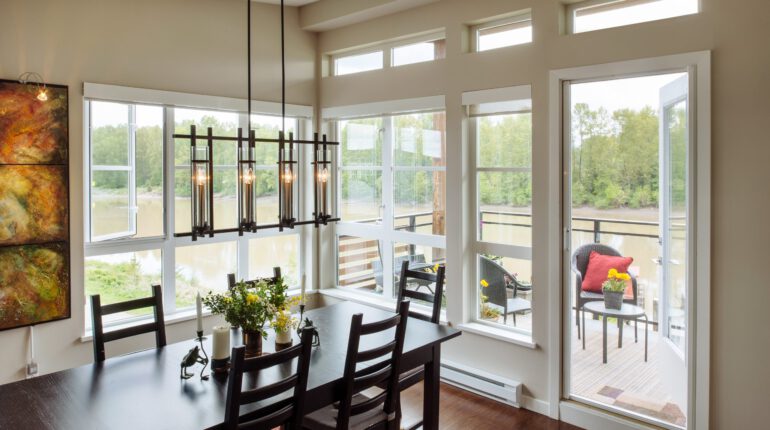
Dealing with freezing temperatures or snow storms is never fun. Ensuring your home is designed to withstand the elements will let you get through the cold winter months without extra worries. Indoor climate control becomes a major concern in winter, especially because heating costs can increase. Fortunately, you can decrease your winter heating bills, prevent structural damage and enjoy your home whether you have to deal with a perpetually hazardous climate or an intense winter. Here are a few strategies…
Passively heat your house
Passive housing uses certain features to heat your home using the energy from the sun. You can create a completely passive house if you’re starting new construction or implement some of the concepts into a remodeling project to save money on heating costs. For example, passive design mandates that living room windows face within 30 degrees of true south. Bedroom windows need to face north. Each window in the home has different glaze requirements, so talk to an architect or local expert before buying windows.
Passive homes also need a control, or feature that allows you to manipulate the amount of sunlight entering the house. Retractable screens are the perfect upgrade to use as a light control. Allow sunlight into the house during peak daylight hours to warm the inside and then close the screens at night for privacy.
Use airtight construction
Your doors and windows should all be completely airtight in order to make use of passive heating. There’s no point in getting warmth from the sun if it will just leak back out through poorly designed windows. No matter what climate you live in, you should have double-paned windows. However, residents of extreme climates may choose triple-paned windows instead. The more layers of glass, the better the window is at trapping interior heat and preventing outdoor air from entering.
Of course, if you have top-of-the-line energy-efficient windows that are incorrectly installed, you will lose out on the benefits. Be sure your Energy Star-certified windows are installed according to manufacturer suggestion by a company you trust.
Have a steep roof
Put gravity to work by selecting a steep roof design for new construction. Gabled roofs are essentially two sloping planes that meet at a single point. Snow will slide off better than on other roof styles, which prevents accumulation. If your roof has too much snow, it may be more than the home can handle, causing damage to your house. Whether or not you go with the gable design, be sure your new home can carry a heavy load of snow, as cold climates may be prone to winter storms.
Cover the entrances
Entryways can be a blessing or a curse, depending on the amount of shelter they provide. Trying to get in the front door during a snow storm will be a hassle unless the entrance is covered. Whether you or your guests are trying to get in, covered outdoor spaces will help protect against the elements and prevent snow accumulation in walking areas.
Clear paths
Snow melting systems, also called radiant heat systems, are useful to homeowners who live in cold climates. The cables or mats – depending on the manufacturer – are installed beneath your sidewalks or driveway and use radiation to produce enough heat to melt falling snow. When you enter or exit your home, you’ll have a safe path to walk on that’s ice free. Furthermore, you won’t have to go out into the freezing temperatures to shovel.
Install railings outside
Ice and snow can be a major hazard when it falls on stairs. Some homeowners already struggle with climbing stairs, and poor weather conditions only makes the situation more dangerous. Strategically place hand rails along outdoor stairways so that you have a way to stabilize as you walk. Don’t overlook stairs in the backyard or at the side of the house.
